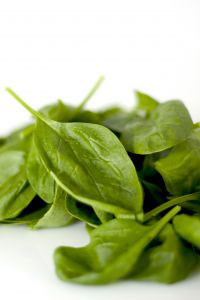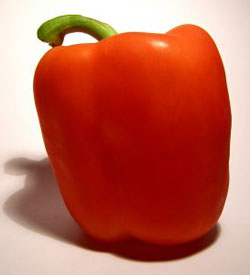 Along with fall comes the seasonal flu. It’s inevitable. People at high risk of catching the flu should protect themselves first and foremost with a flu shot. The Centers for Disease Control and Prevention has great information on steps you can take to prevent a flu infection. It includes the basics like washing your hands and avoiding people who exhibit flu-like symptoms. But I’m going to focus on an area that is often overlooked – your immune system.
Along with fall comes the seasonal flu. It’s inevitable. People at high risk of catching the flu should protect themselves first and foremost with a flu shot. The Centers for Disease Control and Prevention has great information on steps you can take to prevent a flu infection. It includes the basics like washing your hands and avoiding people who exhibit flu-like symptoms. But I’m going to focus on an area that is often overlooked – your immune system.
The job of your immune system is to protect your body from bacterial and viral infections, such as the ones that cause the common cold and seasonal flu. The immune system protects you in three different ways:
- It creates a barrier that prevents bacteria and viruses from entering your body (your skin).
- If a bacteria or virus does enter the body, the immune system tries to detect and eliminate it before it can make itself at home and reproduce.
- If the virus or bacteria is able to reproduce and start causing problems, your immune system is in charge of eliminating it.
So, one thing is for sure, we all need a healthy immune system and what you choose to put on your plate can help! You need to eat food. Fad diets without adequate calories or nutrients are sure to suppress your immunity. Instead, eat healthy and low calorie by hitting your goals for fruits and vegetables daily.
The immune system needs vitamins A, C, and E plus minerals like zinc (Zn) and selenium (Se) to do its job. I’ve compiled a list of foods that best help you meet the needs for these vitamins and minerals.
 1. Spinach. Who knew you could get so much nutrition in such a small amount of food? A one-cup portion of cooked spinach gives you 377% of your daily vitamin A needs, 30% of vitamin C needs, 20% of vitamin E needs, and 15% of zinc. As if you need another reason to include spinach, try adding frozen chopped spinach to your favorite soup, tomato sauce, rice-based dishes, or serve it as a side in its own right with a drizzle of peanut satay sauce and grilled chicken skewers. Stuff it in your sandwiches or mix it in your salads. You’ll be greening up your eating in no time!
1. Spinach. Who knew you could get so much nutrition in such a small amount of food? A one-cup portion of cooked spinach gives you 377% of your daily vitamin A needs, 30% of vitamin C needs, 20% of vitamin E needs, and 15% of zinc. As if you need another reason to include spinach, try adding frozen chopped spinach to your favorite soup, tomato sauce, rice-based dishes, or serve it as a side in its own right with a drizzle of peanut satay sauce and grilled chicken skewers. Stuff it in your sandwiches or mix it in your salads. You’ll be greening up your eating in no time!
2. Sunflower seeds. Just a quarter-cup of these tasty seeds and you’ll get 90% of your daily needs for vitamin E. That’s three tablespoons. Spread it out through the day by adding a tablespoon to your morning oatmeal, one to your lunch salad, and another one to your afternoon snack of low-fat yogurt. It’s one of the healthiest ways you’ll spend 200 calories.
3. Lamb. A modest four-ounce palm-sized portion of lamb has 50% of your daily selenium needs and 38% of your zinc needs. Keep your portion of lamb small since it is high in saturated fat. A good way to include it is to mix lamb with brown rice or quinoa (or your favorite whole grain) with some cooked spinach (which we now know is an excellent source of the important immune system vitamins A, C, and E).
 4. Red bell peppers. One cup of raw red pepper has 291% of your daily needs of vitamin C – more than an orange! Not only that, but you also get 100% of vitamin A. You can top your salad or sandwiches with red pepper. Try making veggie fajitas with black beans, rice, and red peppers.
4. Red bell peppers. One cup of raw red pepper has 291% of your daily needs of vitamin C – more than an orange! Not only that, but you also get 100% of vitamin A. You can top your salad or sandwiches with red pepper. Try making veggie fajitas with black beans, rice, and red peppers.
5. Crimini mushrooms. Known as “baby portabella,” one serving of crimini mushrooms has over 50% of your selenium needs for the day. You’ll also get 15% of your zinc needs. Sautee some in a pan and add a can of crushed tomatoes for a quick sauce. Combine with your favorite whole wheat pasta noodles for a hearty fall meal.
When in doubt, eat a variety of colorful foods each day. Include veggies with lunch and dinner and fruits with breakfast and a snack. Stay off the booze and get plenty of sleep. All these things will help you keep your immune system healthy and in “fighting” shape. You can’t keep yourself from being “germy,” but by all means, simple steps like washing your hands, getting a flu shot, and eating healthy will keep you smiling all fall long.
